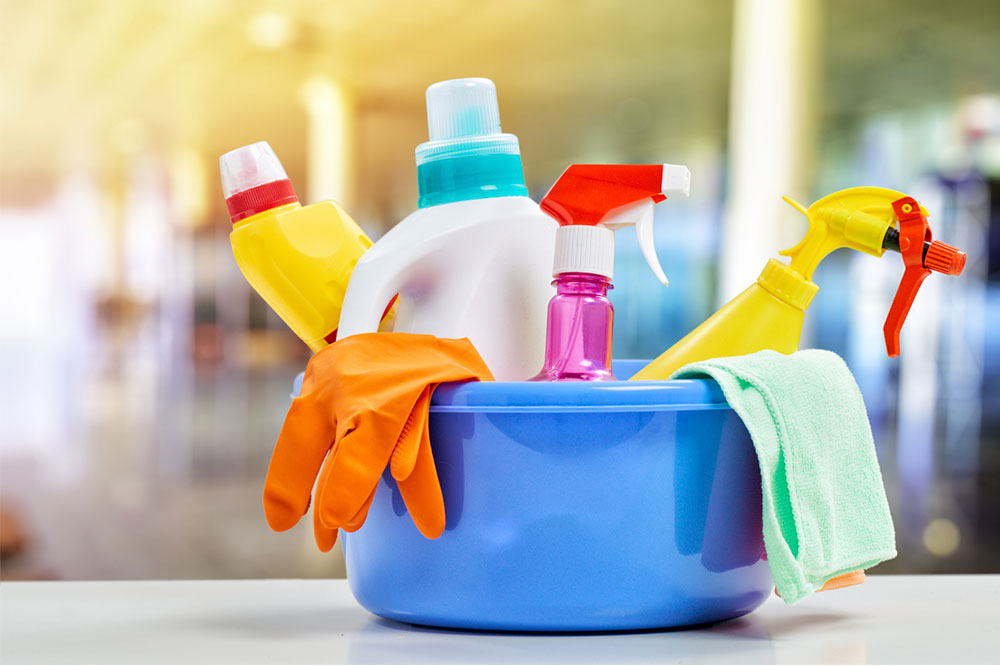10 cleaning mistakes that make the house messier

Cleaning, though exhausting, can be either a nightmarish or a fun project. It is fun because you know your efforts result in a sparking and clean house. It could become a nightmare if you do not set your goals or execute them well. There are some common mistakes that you may make accidentally or make without realizing it. Such mistakes can make your house dirtier than before. Here are some cleaning mistakes that you should take note of:
Using dirty tools
Rags and towels are the most versatile tools for cleaning. However, if they are dirty, unwashed, or moist, they can not only leave streaks on the cleaned surface. Dirty rags leave a nasty smell all around the house. Discard old and dirty rags, and take up different types of soft cloth, microfiber towels, and clean dusters for the house. Also, have separate towels for kitchens, counters, living rooms, toilets, and basins. You can use paper towels if you can or use different colored towels. By doing this, there is no way you can use the bathroom towel for your kitchen. Sponges may clean well, but they can also hide bacteria and germs for a long time. Dry and disinfect a sponge thoroughly before using it again. Microfiber towels or old soft fabric from your discarded clothing are best suited as they can be thoroughly cleaned in your washer.
Clean the vacuum
Whatever type of vacuum you have, clean the dust bag and wipe the attachments to remove any dust or debris. If the dust bag is half full, it can affect the suction power and may send the dust in the bag into your house. If you have a mopping vacuum, ensure that the cloth is not moist and does not carry and foul odor. An unclean cloth can leave streaks on your floor and also leave a terrible odor that is difficult to remove.
Using dusters too much
Though versatile, Dusters may spread the dust all around the area. Use dusters only for reaching objects in higher places, like ceiling fans or cupboard tops. For the rest of the surfaces, microfiber cloth is ideal as it cleans well and does not leave any streaks on the surfaces—complete dusting throughout the house. Then do a thorough round of vacuuming in the same order as you dusted.
Cleaning the floor first
If you notice that your floor needs more cleaning than the ceiling, walls, windows, furniture, or counters, do not start cleaning the floor. Finish dusting and cleaning higher surfaces as the dust and dirt settle on the floor. Finally, use a vacuum or brooms to remove the dust and debris from the floor.
Rubbing stains hard
When you notice any spill, you tend to grab a rag and rub the stain hard as a reflex action. The stain may spread and also become ingrained into the floor, upholstery, or carpet. Instead of rubbing the stain, use a clean rag cloth. Blot the spill gently and use an appropriate stain-removing product to remove the stain completely.
Directly using solutions on surfaces
It may be convenient and easy for you to spray the cleaning solution on the area and wipe it off with a cloth. It is not advisable as the germs and bacteria present on the surface may become airborne and can infect you. You can spray the solution into the cleaning cloth and wipe the surface, so the germs are trapped. You can also add the solution to a bucket of water, dip a cloth in it and wipe the surface clean. If you use the second method, ensure you wear gloves to avoid contact with germs. Once you use the cloth, rinse it with water and dip it in the bucket again.
Keeping windows closed
Whether you use organic or chemical cleaning solutions, ensure that you keep the windows and doors open. It can help the fumes and odors from such products escape outside. Leave the room, keeping the windows, shutters, or doors open for adequate ventilation. Once all the areas are dry, you can close them. If you cannot open the windows, use a fan or an air purifier.
Leaving loose ends
Cleaning your home can be exhausting. Always clean the tools, vacuum, buckets, mops, gloves, and toilet brushes. Set them back in their places once they are dry. Stacking wet tools can attract bacteria, mold, and bad odor. If you use the same tools the next time, you may be causing more mess than actual cleaning.
Top disinfectant sprays
You can choose an exhaustive range of cleaning products that are safe and non-toxic for humans and pets. If there are family members with allergies, check the ingredient list for possible allergy triggers or choose hypoallergenic cleaning products: Some top disinfectant sprays include,
- Mrs. Meyers Clean Day Multi-Surface Everyday Cleaner
- Greenways Organic All-Purpose Cleaner
- Go from Greenshield Organic Multi-Surface Cleaner
- Dr. Bronner’s Sal Suds Biodegradable Cleaner
- Seventh Generation Free and Clear All Purpose Cleaner
- FIT Organic Pet Stain and Odor Remover
These mistakes make cleaning a tougher job than it actually should be, so avoid the above issues to make sure your house is spotless!